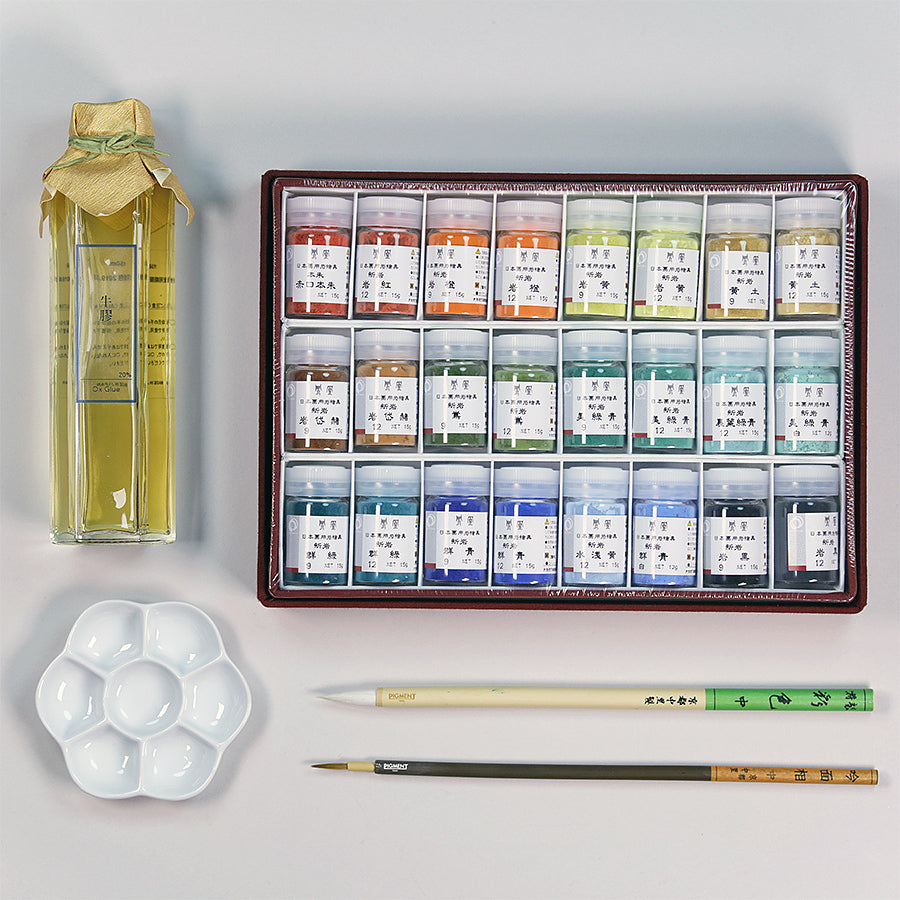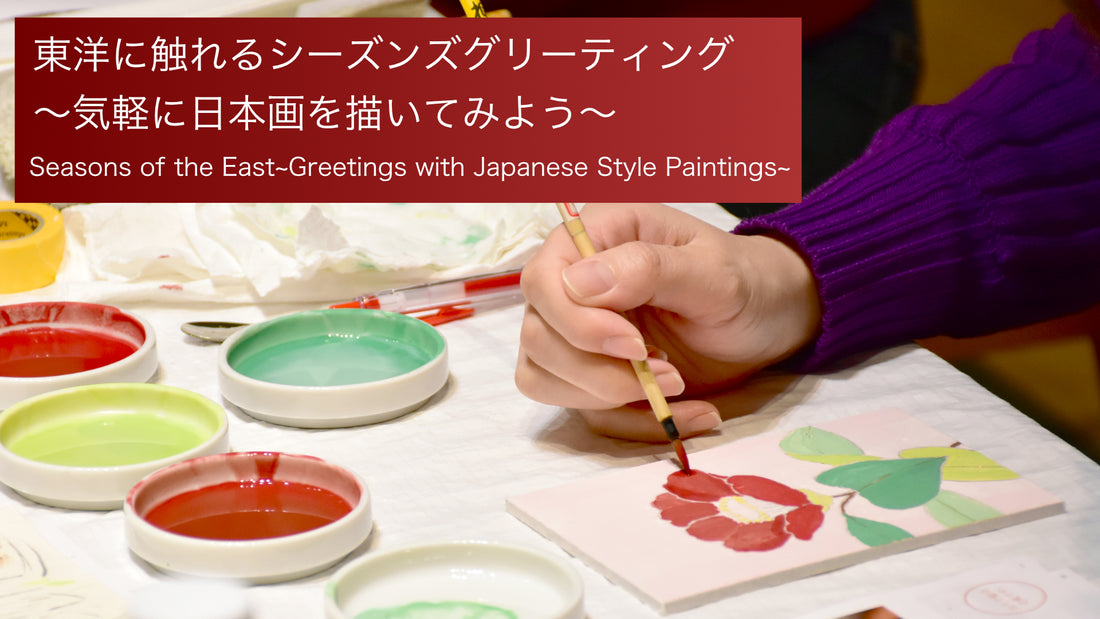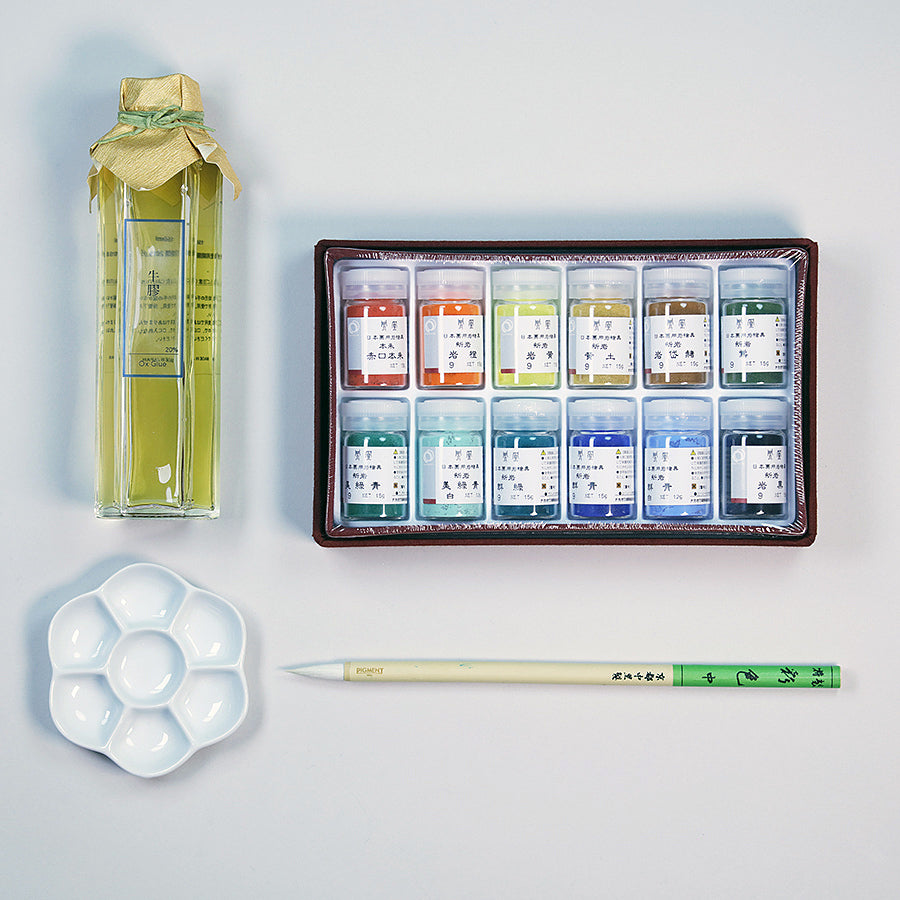In the Kokin Wakashū, a “Collection of Japanese Poetry Ancient and Modern”, compiled by the imperial command in the early Heian period (794-1185), there is a poem like this one.
“Once I wet my sleeves
Scooping water
It’s frozen now
On this first day of spring,
Will the wind melt it, I wonder?”
The above translation is from Waka Poetry (Cited on March 10, 2023)
http://www.wakapoetry.net/kks-i-2/
This poem is composed by Ki no Tsurayuki, a famous diarist and poet of the Heian period. In the above poem, "I sipped my sleeves in the summer river and they froze in winter, but perhaps with today’s wind of spring, it will melt the frozen water.” Even with just a few words, Ki no Tsurayuki beautifully describes several scenes of four seasons in Japan.
Japanese art has also expressed the beauty of the four seasons in various ways through paintings. For example, "Birds and Flowers of the Four Seasons," a late 16th-century work by the Kano school in the collection of the Metropolitan Museum of Art, at first glance appears to be a landscape painting, but the plants, flowers and water surface are so intricately and delicately rendered that it looks like a single work no matter where it is cropped.

“Birds and Flowers of the Four Seasons” by Kano school, 1573-1615 (Momoyama period), The Metropolitan Museum of Art’s Collection

“Birds and Flowers of the Four Seasons” by Kano school, 1573-1615 (Momoyama period), The Metropolitan Museum of Art’s Collection
The well-calculated composition creates a harmonious scene as if peering into the natural world through a magnifying glass or looking down on the landscape from the sky. Perhaps this is the aesthetic sense that Japanese art has acquired over history.
The paints, which are as powerful as the gold leaf that fills the screen, are beautifully applied, and even after 400 years, they still retain their intense vividness. The beauty of Japanese art is supported by traditional Japanese painting materials such as Sumi ink and Iwa-enogu (mineral pigments).
After seeing these masterpieces, some of you may think that the artists used complicated materials back then, however, the formation of these paintings is quite simple. Basically, Japanese paintings are created by mixing Iwa-enogu (mineral pigments) with Nikawa (animal glue.)
The "Beginners Kit" series by NAKAGAWA GOFUN ENOGU CO., LTD. allows everyone to learn the beauty of Oriental art and color even without much experience.
The Beginners Kit includes 9 colors of mineral pigments, 2 drawing designs, transfer paper, palettes, hemp paper boards, animal glue, sumi ink, and paint brushes. You can enjoy painting by simply coloring the pictures with the help of the instruction manual. The drawing size is postcard size (15 x 10 cm), therefore, you could display it in your room or send it to your loved ones for the season’s greetings.
The color combinations in the set change according to the design of the flowers, so you can also experience the colors that are unique to Japan’s four seasons.
In this article, I will introduce you to the plants and flowers that appear in these beginners kits which represent different seasons. You may choose one according to where you or the person you give it to was born or the pattern you would like to hang on your wall, and some of our customers choose the kit that contains their favorite colors. This reminds me of the main reason people like our store this much is because of the colors!
・Spring

Spring is when cherry blossoms bloom which also reminds me of Togyū Okumura’s work, "Cherry Blossoms at Daigo-ji Temple". In this painting, he painted cherry trees in a bold composition and what makes it even more breathtaking in person is the light, almost white peach color of the cherry blossoms.
・Summer


Next, we have the summer flowers like morning glory, bellflower and iris. The Nezu Museum in Minami-Aoyama, Tokyo, has Ogata Kōrin's "Irises screen" in part of their collection, and every year, visitors can enjoy the painting while surrounded by the full bloom irises in the museum's garden. Fun fact, those who have lived or visited Japan, might notice that the design on the 5,000 yen notes is actually the “Irises screen” painting.
Hibiscus coccineus (or Momiji-aoi in Japanese) is also a summer flower that blooms from July to September, although it has Momiji in its name, which means red leaves. Hibiscus coccineus grows to a height of nearly 2 meters. It is a native of North America and was imported to Japan as an ornamental plant in the early Meiji period 1868-1912).
・Autumn

In Japan, when people think of autumn plants, the first thing that comes to mind is the Red-leaf Japanese Maple. And one of the most famous paintings of red leaves is "Autumn Landscape" by Hishida Shunsō. Although in this Beginners Kit series, all the drawings are painted on hemp paper board, Eginu (or silk), which allows artists to create illusionary gradations through painting both the back and front, is also a very important substrate in Japanese art.
Other than that, orchids have a huge range of blooming times which, depending on the species, you can find orchid blooms all year long. And in the world of haiku, orchids are commonly portrayed as the impression of autumn.
・Winter
Last but not least, we have the winter flowers, winter peony and camellia. Peonies, which are known to have been a favorite of Yang Guifei, the consort of Emperor Xuanzong of Tang in China. You can find a lot of paintings and calligraphy using peony as the main subject in Chinese art as well as Japanese art. In the painting "Birds and Flowers of the Four Seasons" that I mentioned above, you can see a flower that appears to be a peony is depicted on the right side of the second photo.
A painting, “Butterfly and Tree Peony” by Shinmōken from the book named “Albums of Chinese Paintings (Hikkō-en)” which is designated as a national treasure, was painted between the 13th and 17th centuries. The alluring peonies along with butterflies and moths, which are portrayed as symbols of the spiritual realm, reminds me of the European vanitas paintings.
Have you found the flower or story that caught your interest? If you would like to experiment with more authentic materials while painting freely, I also highly recommend the following sets. They contain two types of mineral pigments per color in small bottles, one with coarse particles and the other with fine particles, and they are available in 12 colors and 24 colors.
 PIGMENT SELECT Japanese Painting set/Artificial24
PIGMENT SELECT Japanese Painting set/Artificial24Translated by Atsumi Okano and Nelson Hor Ee Herng
PIGMENT TOKYO Art Materials Experts








